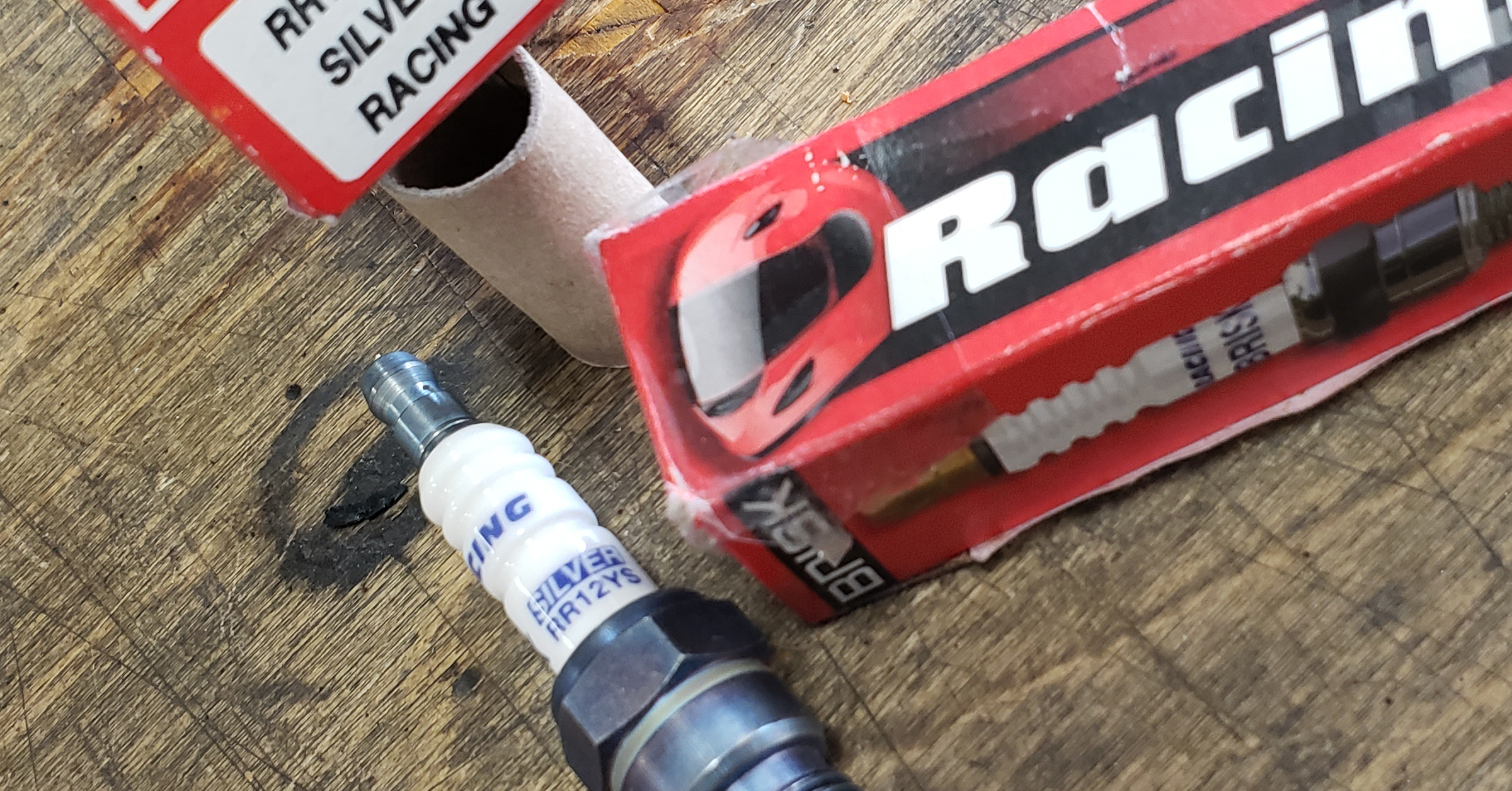This is sort of a how-to on how I do my plug changes as well as getting away from the FoMoCo SP-542 and trying out a different plug. It remains to be seen how well it will work out for me, but I will definitely keep you guys updated.
But before I get into the details, here’s a quick breakdown of a sparkplug change on the 3.5L ecoboost using the Brisk plugs and some techniques I’ve learned along the way.
Now that that is out of the way, it should be noted that I’ve made a few edits after initially writing this that cover a few different topics:
So on the advice of a pretty good local tuner, I decide to try out some Brisk spark plugs (Brisk Racing). There wasn’t necessarily anything wrong with the 542s I was running, but with the power goals and modifications I am shooting for, I wanted to attempt one additional step colder of a plug (OEM was 534s, heat range 6, 542s are range 7) by going heat range 8 to see if I can squeeze some timing out of her. Although I have limited personal experience with Brisk, a lot of top shops and tuners use these things. I did some research and on the advice of that local tuner, decided on trying out the Silver Racing plugs (hey, it has Racing in the name, so it MUST be good, lol). They are heat range 8, which is 2 steps colder than OEM and it remains to be seen if I can get a bit more timing out of these or if they will just foul out. Oh, and they are Made in the USA so that’s a plus, right?
First thing is getting those connectors off the coils. Slide back the red clip on the coil connector, it’s easy enough with a small flat head screwdriver:
Then just press the clip retainer and slide off the connector. After disconnecting that, use an 8mm socket to remove the coil retaining bolt, then pull out the coil. Even though I only complete one cylinder at a time so as not to confuse things, I still typically mark the coil with a sharpie identifying which cylinder it came from.
Before you take out the old plug, it is important to use some air to blow out any debris that may be residing in that spark plug well so that it doesn’t fall into the cylinder. You’d be surprised how much junk gets blown out of there, despite them being “sealed”.
After pulling the old spark plug, I look at the condition of it, mark it with a sharpie as well and I personally keep my old plugs for at least until the next plug change to compare them to the previous set. So they go in a zip lock and stored away.
Here’s the new plugs:
Side-by-side comparison:
Tip/electrode difference:
I had the SP-542s gapped to 0.26 and went with the same on the Brisk plugs.
I use an old piece of rubber hose to put onto the end of the new plug as it makes it a bit easier to install by hand into the well. But before I install it, I give it a good thin coating of some anti-seize. You will thank yourself later if you do this, trust me.
Factory service manual says torque to 133 in-lbs, not much, I know.
If you convert the in-lbs to ft-lbs you get 11.1. Comparing to the recommendation provided by Brisk, it falls right in line (the plugs are conical seat, 14mm thread diameter going into an aluminum head).
After installing the plug, make sure to use a small amount of dielectric grease (I like to use Dow Corning #4, but others will work) inside the coil boot to help keep moisture out as well as ensuring it doesn’t adhere to the plug and become a nightmare to remove for the next plug change. In the photo showing how much is coming out of the tube is the amount I usually use.
After that, installation is the opposite of removal.
Some tips to be mindful of:
1) If you have the composite valve covers like I do, be very careful when torquing the coil retaining bolt. The threaded hole is just a metal insert that can spin on you if over-torqued. If you spin it too badly, that’s it…I don’t really know of a fix other than getting a whole new valve cover, maybe some sort of epoxy. The book says 62 in-lbs, then another 50 degrees, but TBH, I did that spec on one of my retaining bolts the last time I changed the plugs and it began to spin (yes, I checked to make sure I was in-lbs and not ft-lbs). So before I let it get too bad, I just left it. Luckily it was in pretty tight and didn’t have any issues the entire time I had those 542s in. This time around I was just very careful to do it by hand and get them as tight as I felt comfortable. That seemed to work pretty well as they are all solidly in there.
2) If you have an XDI HPFP, you’re going to have to remove the low and high side fuel lines as well as the top 2 bolts to spin it a bit to access the coil on cylinder 4. I think I heard XDI had a redesign, but can’t confirm that.
Anyway, as mentioned, I’ll keep you folks updated once I get her back on the road. After doing some research on the Brisk product line, I gotta say, I’m fairly impressed so far. Now the proof will be when I get some miles on ’em.
EDIT October 21, 2020: Plug Removal w/ XDI HPFP
It’s been brought to my attention that there is an easier way to get to the #4 coil if you have an XDI HPFP. Simply remove the low side fuel line AND remove the low side -6AN fitting out of the HPFP body (there is just an o-ring behind it) and that will give you enough clearance to remove the coil. No need to remove the high side, 2 top bolts, or spin it. I have not done this method yet, but will the next time I do a plug change.
EDIT December 1, 2020: Plug too cold and going one step warmer
So I was having an interesting issue when under part throttle and the engine loaded up. Usually while cruising and going uphill, the car would feel like it’s hesitating or misfiring. I began to wonder if I may have gone too cold of a plug. As e85 burns cooler than regular fuel, I may have inadvertently taken the plug out the prime temperature operating range. So I decided to switch to one plug warmer, the RR14YS, which is heat range 7, the equivalent of the SP542s. After swapping these in, I no longer have that issue so I will continue to monitor and see how the car likes this plug.

